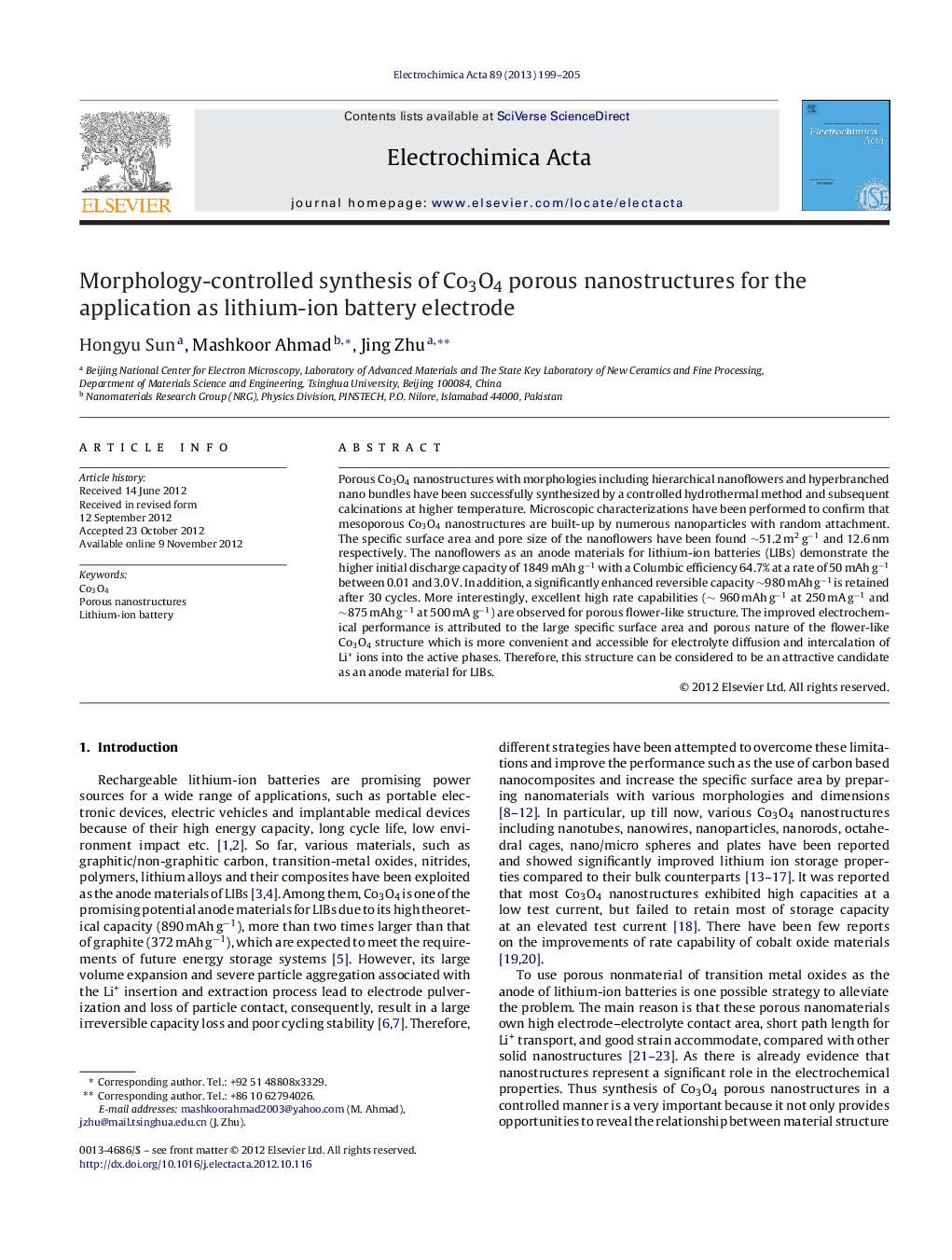| Article ID | Journal | Published Year | Pages | File Type |
|---|---|---|---|---|
| 187590 | Electrochimica Acta | 2013 | 7 Pages |
Porous Co3O4 nanostructures with morphologies including hierarchical nanoflowers and hyperbranched nano bundles have been successfully synthesized by a controlled hydrothermal method and subsequent calcinations at higher temperature. Microscopic characterizations have been performed to confirm that mesoporous Co3O4 nanostructures are built-up by numerous nanoparticles with random attachment. The specific surface area and pore size of the nanoflowers have been found ∼51.2 m2 g−1 and 12.6 nm respectively. The nanoflowers as an anode materials for lithium-ion batteries (LIBs) demonstrate the higher initial discharge capacity of 1849 mAh g−1 with a Columbic efficiency 64.7% at a rate of 50 mAh g−1 between 0.01 and 3.0 V. In addition, a significantly enhanced reversible capacity ∼980 mAh g−1 is retained after 30 cycles. More interestingly, excellent high rate capabilities (∼ 960 mAh g−1 at 250 mA g−1 and ∼875 mAh g−1 at 500 mA g−1) are observed for porous flower-like structure. The improved electrochemical performance is attributed to the large specific surface area and porous nature of the flower-like Co3O4 structure which is more convenient and accessible for electrolyte diffusion and intercalation of Li+ ions into the active phases. Therefore, this structure can be considered to be an attractive candidate as an anode material for LIBs.
